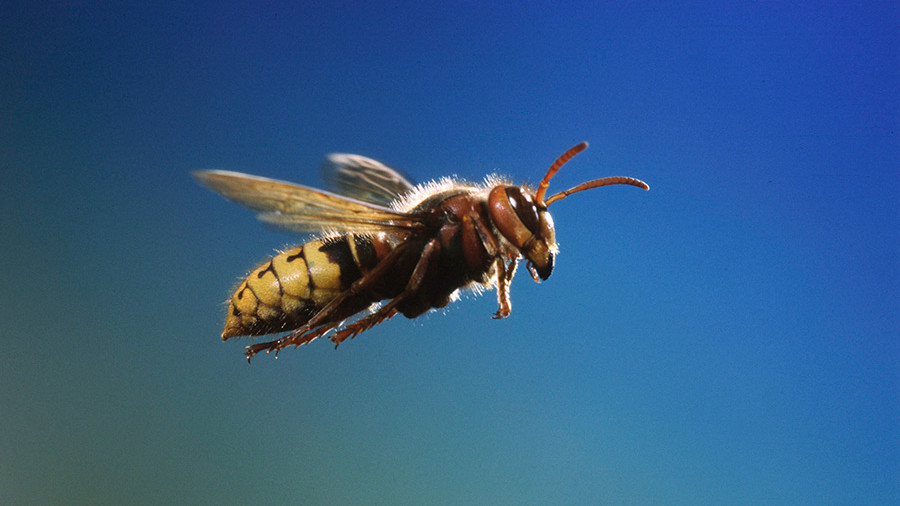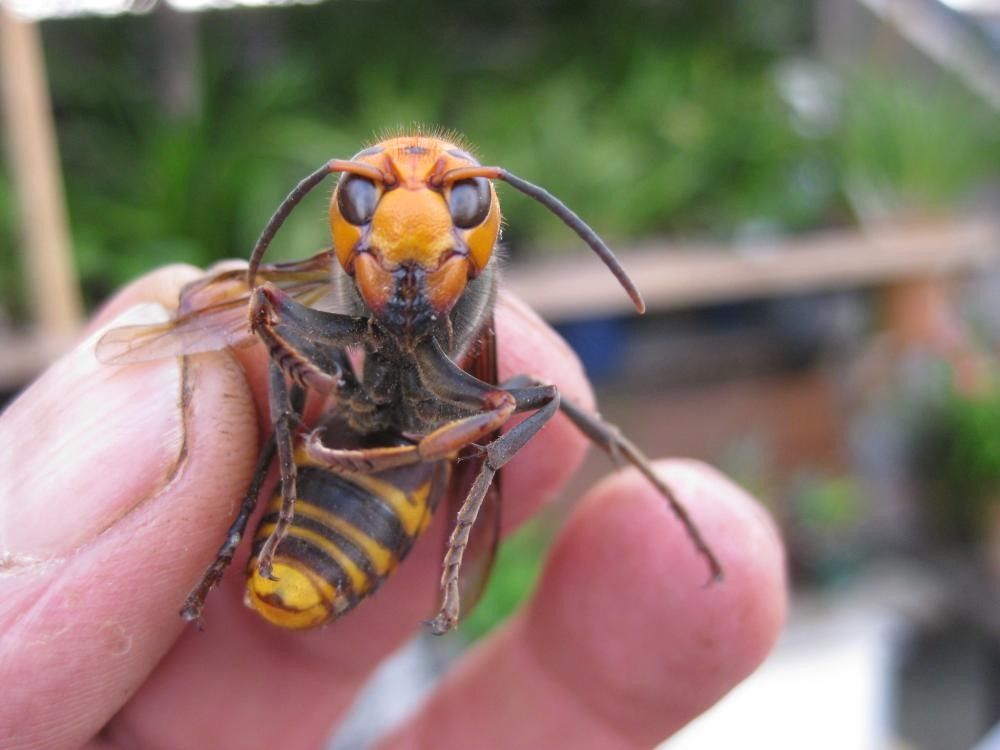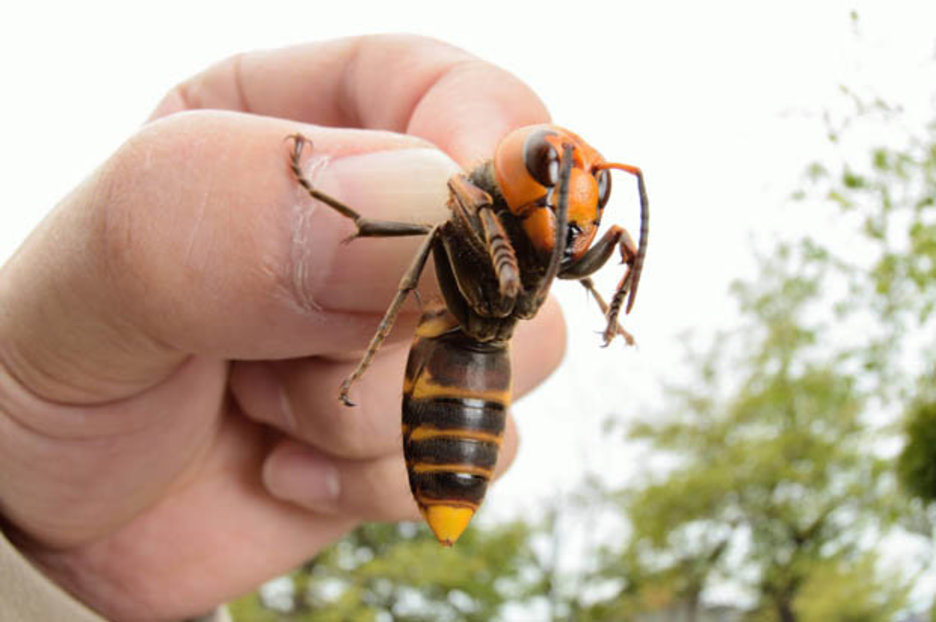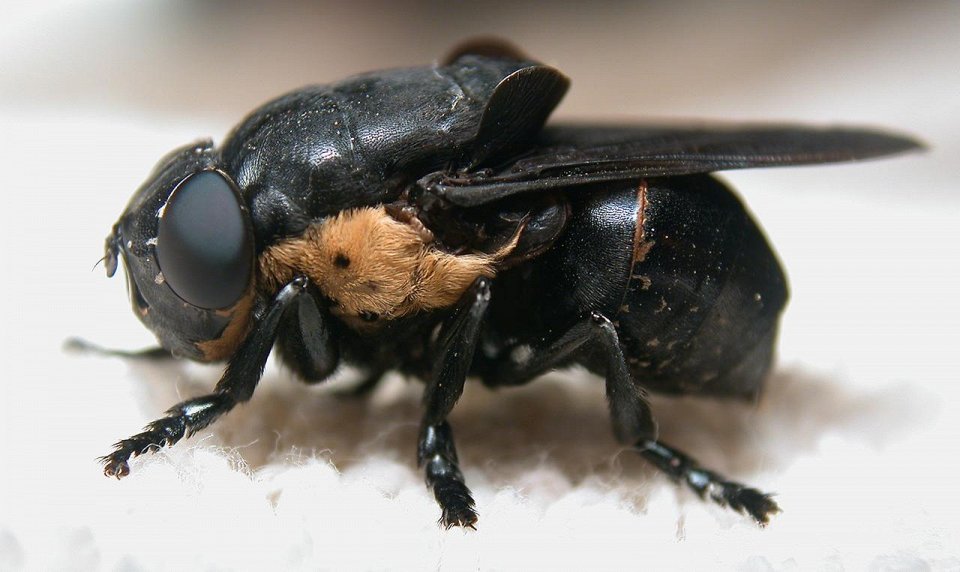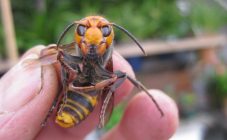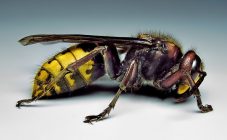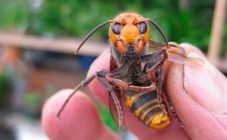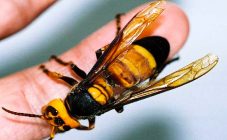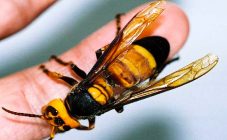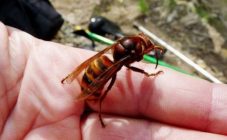Content:
Giant insects are not only a figment of the sick imagination of science fiction writers, but also the reality of being on earth. This is confirmed by the huge Far Eastern hornets, their other name is Vespa Mandarinia Japonica - Japanese hornets, and the Japanese themselves called them "suzumebati", which means "bee sparrow". This is a huge arthropod insect, dangerous with its poison even for humans. Also on this list are the giant Japanese wasp and the Japanese killer bee. Each insect potentially dangerous to humans does not actually hunt people, but rather protects its habitat. A person is stung by these insects through his own negligence. True, for the "bitten" it is little consolation. To avoid defeat, you need to know a little more about the habitat and their habits.
Japanese hornet suzumebachi
This species of wasps lives in the Far East, and since all of Japan is the Far East, they had the honor to name this quarrelsome hymenoptera, which takes 40 lives of the Japanese population annually. The statistics are very frightening, because they indicate a certain sad norm. What is this killer insect:
- scholars have named it Vespa mandarinia;
- belongs to the class of insects;
- from the order Hymenoptera;
- arthropod type;
- family of wasps are real;
- genus of hornets.
What a giant Japanese wasp looks like
The Far Eastern hornet Vespa mandarinia, and this is how this insect, notorious throughout Asia, is classified, looks frightening:
- The length of an average individual is 5 cm, and especially large ones reach 6-6.6 cm.
- The span of its membranous wings reaches 6-7 cm.
- The head is large, in addition to 2 eyes, which all wasps are equipped with, it has 3 more eyes located slightly higher than the main ones: 2 on the sides and 1 in the center.
- The head is also equipped with very powerful jaws, with which this predatory insect kills its prey and dismembers it.
- The sting through which the Japanese giant hornet injects poison into its prey reaches 6 mm - approximately the size of an adult's pinky fingernail. It is located at the end of the back of the insect's body.
- The color is not much different from the usual color of the wasp - yellow stripes on a black background and dark yellow webbed wings.
- The chest of the Far Eastern hornet is covered with a powerful chitinous shell and equipped with three pairs of articulated legs.
Features of the life of the Japanese hornet
They live and hunt in packs. Like bees, hornets have their own hierarchy:
- The queen is the head of the pack, she creates a colony, and all the other individuals serve the same purpose - to raise young.
- The huge Japanese hornet is a predatory insect, it feeds on nectar only for dessert, and so in their daily menu there should be bees, bumblebees and other insects that are inferior to it in size and graze in front of their powerful jaws.
- Hornets live in nests, which they mold themselves from the chewed bark of trees. Usually these are gray, hollow vessels with a hole similar to a seashell. As soon as the nest is ready, the uterus lays the larvae, and then the whole flock is engaged in feeding and nursing the larvae.It is during this period that hornets are especially aggressive.
- Hornets hunt strategically. First, the scouts fly out and look for hives with bees. The soldier bees are always trying to neutralize the scouts. If the hornets are found in time, then each of them is surrounded by a ball of bees, they swarm around it, creating a temperature inside the swarm above 40 ° C, which kills the enemy. But, if the scouts are not destroyed, they will bring a pack of killers who will destroy all the inhabitants of the hive, right down to the bee larvae.
- In the spring, the uterus leaves the hatched nest and looks for a place to create a new family. She makes the first clutch of eggs in the season, feeds and nurses them herself. When the young grows up, they begin to build a nest and take care of the subsequent clutches of larvae. This continues the cycle of creating new hornet colonies.
- Hornet families live only one year. When the young grows up, the young hornets mate. After mating, the males die, and the fertilized queens, having survived the winter or the rainy season, lay the larvae, and the cycle repeats.
- When hunting, they actively use their powerful jaws - mandibles, with which they crush their victims. The larvae feed only on the "meat" of other insects, and the adults are omnivorous, do not shun meat and fish, as well as sweet fruits.
Why a hornet of the genus Vespa mandarinia is dangerous to humans
In any case, the famous entomologists, scientists studying insects, say so. They advise, upon seeing a hornet's nest, to urgently leave this territory, because the insect will regard their appearance as a desire to harm the larvae, and then the person will be attacked. The local population and guests who have become victims of the sting of these giant insects disagree with entomologists. Hornets strike with their toxic poison and away from their nest due to their nasty character. Meeting a person with a Japanese hornet does not bode well, so you should not expect that, sitting on the body, the hornet will simply flutter and fly away. He will sting, and this is not only very painful, but also life-threatening, because the poison that he will inject has the following composition and properties:
- Mandrotoxin is a neuroparalytic toxin that causes unbearable pain that torments the stung person for a long time, so no amount of pain relief helps.
- The histamines and protein contained in this giant's venom cause a violent allergic reaction that can only be blocked with adrenaline injections. But, if a person is prone to allergies, then anaphylactic shock from stinging this insect occurs almost instantly, so the outcome can be fatal. Most of the people who die from the Japanese hornet are allergy sufferers who were not helped quickly enough.
- The tissues affected by the poison are very quickly destroyed by the action of the protein contained in the poison. This process is difficult to stop, and people recover from a hornet for a very long time, because tissue necrosis, extensive hemorrhages, and often damage to internal organs occur
Killer insects
The Vespa Mandarinia hornet is widespread in Southeast Asia, but depending on the geography of its habitat, it is divided into several subspecies. The most harmful of them is Vespa Mandarinia Japonica. It is an endemic insect that lives only on some islands in Japan. The rest of the subspecies are found quite often in the villages and suburbs of Southeast Asia. But they are not the only ones with such a bad reputation for killer insects. In addition to them, they are quite dangerous:
- Africanized bees, which have in their arsenal a venom not unlike the usual bee venom, but attack in a flock and pursue their prey until they kill. Escaping from them is almost impossible if there is no shelter nearby. Moreover, one cannot hide from them in the water, they swarm above the water, waiting for the emergence, and bite into the head.
- The human gadfly is a giant fly-like insect that, when bitten, injects its own larvae into the victim's body. This is the only way they can grow and develop. The carrier of the larvae may not even be aware of this, but begins to hurt due to intoxication of the body and tissue necrosis. Any warm-blooded animal, including humans, can become a victim. Its habitat is Central and South America. By attacking herds of cattle, they make their meat unsuitable for food, which greatly annoys farmers.
- Stray ants are inhabitants of the African continent who migrate across Africa, devouring everything in their path. These are huge colonies, where there can be up to 20 million individuals. And if we consider that their size is 2.5 cm, and their powerful jaws literally tear apart the flesh, then meeting these migrants does not bode well for either people, animals or reptiles. They literally sweep away all living things in their path.
- A kissing beetle stings a person on the lips when they sleep. He is attracted by the carbon dioxide released by breathing. When bitten, it endows its victim with the unicellular parasite Trypanosoma Cruzi. This parasite can cause heart failure due to its waste products. It is called Chagas disease and annually kills 12-13 thousand people. This insect has a fairly wide habitat - Australia, Central and South America, Africa, Asia.
As you can see, there are many insects dangerous for animals and humans, so you should know about the most common habits in order to avoid health problems and, possibly, threats to life.
